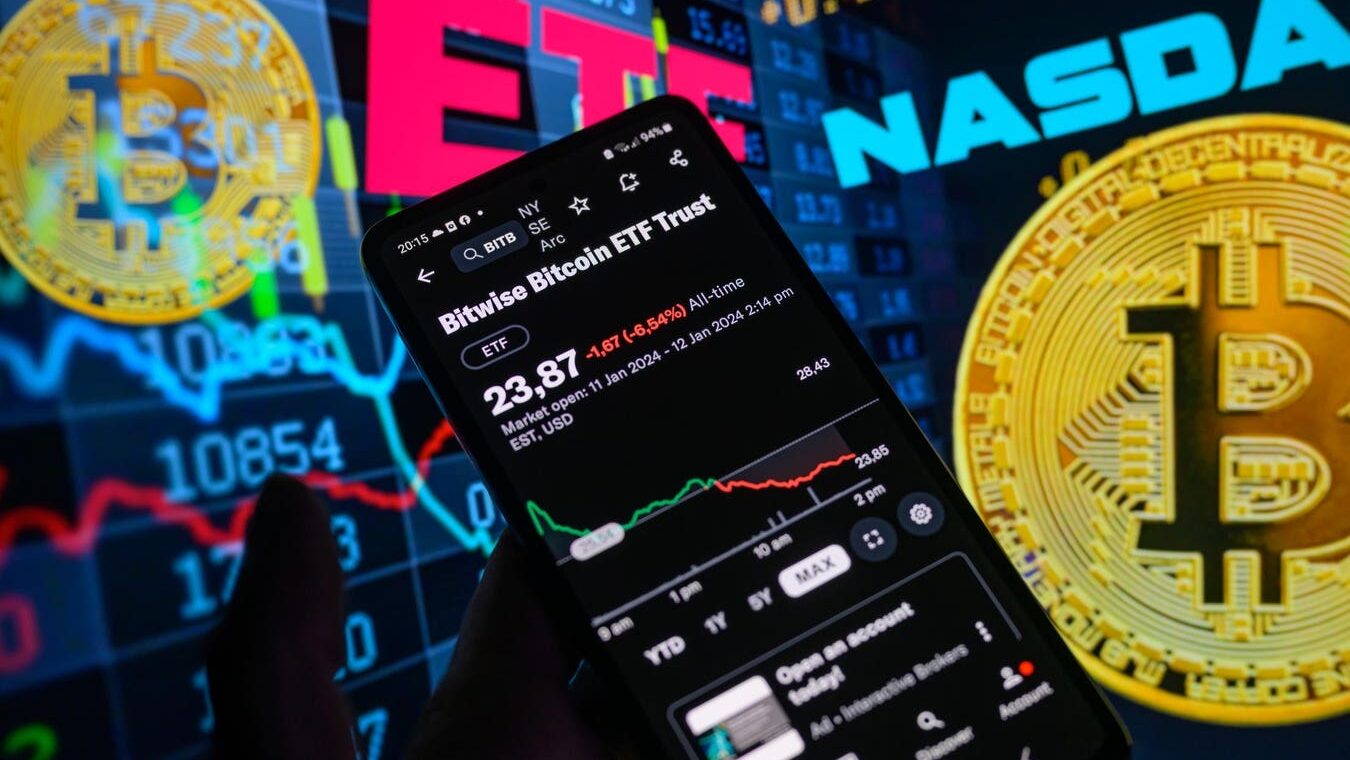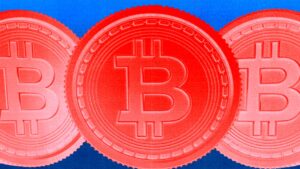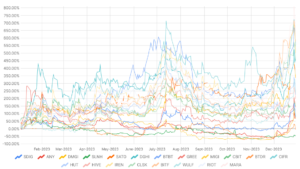Decentralized finance and the future of digital assets is often touted as the heralds of a financial revolution, and as usual, there is no shortage of controversy. While skepticism emanates from traditionalists citing volatility, regulatory concerns, and their association with illicit activities, futurists champion the potential for growth, technological innovation, access to capital, and enhanced privacy. In this exploration, we navigate through both the establishment’s reservations and the optimistic perspectives to decipher whether digital assets are poised for sustained relevance or caught up in a transient hype.
What are Digital Assets?
Digital assets encompass a wide range of intangible, digitized content that holds value. Here are some examples:
- Cryptocurrencies: Digital or virtual currencies that use cryptography for security. Bitcoin, Ethereum, and Litecoin are examples.
- Digital Tokens: Represent ownership or access rights and are often built on blockchain technology. Non-fungible tokens (NFTs) are a specific type, representing unique digital items like art or collectibles.
- Digital Securities: Digital representations of traditional financial instruments such as stocks, bonds, or investment contracts, often issued on blockchain platforms.
- Digital Currencies: Central Bank Digital Currencies (CBDCs) or digital versions of national currencies issued by central banks.
- Smart Contracts: Self-executing contracts with the terms directly written into code. They automatically execute and enforce the terms when predefined conditions are met.
- Digital Identity: Personal information, credentials, or attributes stored electronically. Emerging technologies aim to secure and manage digital identities.
- Digital Media: Music, videos, e-books, and other digital content that can be bought, sold, or licensed.
- Data Ownership Rights: Digital assets related to ownership or control of personal data, allowing individuals more agency over their information.
- Domain Names: Digital assets representing online addresses, bought and sold in the domain name market.
- Software Licenses: Digital licenses granting permission to use specific software or applications.
- In-Game Assets: Virtual items or currency within video games that players can buy, sell, or trade.
- Patents and Intellectual Property: Digital representations of patents, copyrights, or trademarks stored electronically.
- Digital Wallets: Containers for storing digital assets, often used for cryptocurrencies, tokens, or digital certificates.
- Digital Health Records: Electronic records of an individual’s health information, often stored securely and accessible by authorized parties.
- API Keys: Digital credentials that allow access to specific functionalities or data in software applications.
These examples showcase the diverse nature of digital assets, spanning financial instruments, digital content, and various forms of digitized value. However, today we are focusing on digital assets that can be exchanged through Decentralized Finance (DeFi), in other words, mainly crypto.
You can learn more about Decentralized Finance in our article here.
Traditional And Risk-Averse View
The traditional estabilishement will tell you a few key points when confronted with the opportunity brought by digital assets. We will offer some counter-point views to try and enhance the discussion.
“1. “Too Risky”
The extreme volatility witnessed in digital assets, exemplified by Bitcoin’s roller-coaster ride, has fueled apprehension. The 2021 market crash, where Bitcoin plummeted from over $64,000 to $16,500, underscores the perceived risks. Regulators emphasize caution due to the inherent unpredictability, urging investors to tread carefully.
While true, we now know that BTC appears to have a price cycle of ups and downs, linked to the halving events, pre-programmed from the beggining by Satoshi Nakamoto. The current up cycle has been estabilished by the US ETF Regulation.
2. “CBDCs will out perform them”
Governments are apprehensive about decentralized digital assets challenging their authority. Central Bank Digital Currencies (CBDCs) emerge as a controlled alternative, with programmable features that governments can manipulate to favor their financial institutions. The potential dominance of CBDCs is considered a counterforce against decentralized assets.
The concern here I believe is not privacy or government control, but the reliability of a monetary value being backed-up by a full grown and strong state, just like traditional fiat money.
3. “It’s untraceable money”
Skepticism persists about digital assets being conduits for enabling illicit transactions while evading regulatory oversight. Despite the argument that well-regulated digital assets can enhance traceability through coded transactions, the shadow of the “dark money” narrative hampers widespread adoption.
However, we disagree. Should the government really want to get to the bottom of some crypto transactions, if anyone could do it, it’s them. Sure, DeFi and other technologies makes it way harder to do so, but it is not impossible. So, we circle back to the privacy concern. The individual should be empowered to have at least some control over his own assets and not have any government passively receiving all the information on all the transatcions (intending to collect taxes, say, for instance). The fact that people would use that for illicit activities is not because of “untraceability” of money, and if it didn’t exist, they would definetly find another way to do so.
Futurist Optimism On Digital Assets
Now we move on the optimistic view of the futurists, pointing their main argument points and doing the same, offering a counter-point.
1. “Digital assets are great store of value and investment”
Contrary to traditional assets, digital assets, particularly Bitcoin, are gaining recognition as stores of value. Institutional participation through instruments like Bitcoin ETFs signals a shift. Proponents like Cathie Wood predict substantial growth, providing an investment avenue for institutions, family offices, and retail investors.
Yes, but there are risks eitherway. One should study carefully how the market operates, what the charts indicate, what other great investors are doing, and make risk-minized decisions. There was little point in buying crypto on mid-2022 and even so many people did that, just before the bubble burst.
2. “Blockchain Technology”
The transformative power lies in the underlying technology – blockchain. Enabling programmable money and smart contracts, blockchain revolutionizes commerce. Industry giants like JP Morgan, Visa, and PayPal invest heavily in this infrastructure, paving the way for a future where digital commerce thrives on decentralized digital rails.
Being digital binary money and contracts, even with all the safeties in place, we know it’s not perfect. You can read here our article covering the first ever blockchain smart contract hacking here.
3. “Financial inclusivity and lower transactions costs”
Digital assets offer financial inclusivity, benefiting populations in developing nations and immigrants. These individuals leverage digital assets for efficient cross-border transactions, sidestepping costly traditional banking channels. The potential for reducing transactional costs resonates globally, transcending borders and economies.
True, it can be used for cheaper transaction fees and it allows travellers and migrants to leave their home country currency behind. However, governments worldwide are aware of these beneficial use cases and are cracking down on tax regulations for crypto, regardless of where you store it, be it in an Exchange or in a Decentralized Finance. So, if some crypto profit appears in your bank account, and unless you buy something paying straight with crypto, it will, your government might want to have a talk with you.
The key counter-point here is, it’s not just transaction fees, but tax regulations. The use of crypto, as all other investments and financial operations involving risk, should be carefully planned and calculated through-out all it’s variables, and people often do not think about taxes, which can have some serious consequences.
4. “It helps protect privacy”
Privacy remains a driving force behind the appeal of digital assets. Citizens seeking independence from perceived institutional control find solace in the privacy afforded by crypto-assets. This appeal extends to those residing in nations with governance challenges, emphasizing the role of digital assets in advancing individual privacy.
Yes, it does. But from whom? The government, Big Tech companies or just other people? And to what extent? Maybe you just don’t like ads, or maybe it’s another reason. But here is the thing: People will bash about privacy concerns and all they don’t want leaked is their internet search history. Guess what, we are already living in a Orwellian society. If privacy is really a concern to the point of you adhering to Decentralized Finance, it would make sense to also not have a smartphone that collects personal and beheavioural data, not use social media, and generally keep your devices offline.
Balancing the Scales: The Inevitability of Digital Transformation
The discourse surrounding digital assets encapsulates a clash of perspectives, reflecting the broader dichotomy between tradition and innovation. While acknowledging the risks and concerns raised by skeptics, the undeniable momentum of digital transformation in the financial landscape cannot be ignored. The move towards programmable money, technological advancements, and the pursuit of financial inclusion indicate a paradigm shift that favors the digitization of assets and currencies.
In conclusion, the fate of digital assets hangs in the balance between cautious establishment views and the optimistic outlook of futurists. As the world gravitates towards digitization, propelled by technological forces and evolving financial needs, the role of digital assets appears destined for prominence. The journey, however, demands careful navigation, regulatory frameworks, and an awareness of the evolving landscape.





